 | TODAY IN SCIENCE HISTORY NEWSLETTER - 5 MAY |
| Feature for Today |
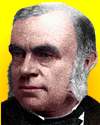 On 5 May 1811, John William Draper was born, the English-American chemist who pioneered in photochemistry. On 5 May 1811, John William Draper was born, the English-American chemist who pioneered in photochemistry.His interest in spectroscopy and photography was applied to give the first astronomical photograph. Its subject was the moon (1840). He also studied photographs of the solar spectrum to show that contained both infrared and ultraviolet light. His photographs of persons include the oldest surviving photgraphic portrait (1840), and he was one of the first to produce microphotographs. His interests extended to publishing such books as a History of the American Civil War and History of the Intellectual Development of Europe. He died on 4 Jan 1882. A few years earlier, in 1878, he published his Scientific Memoirs, Being Experimental Contributions to a Knowledge of Radiant Energy. The Preface provides a summary in his own words of his work on the effects of radiations and on radiant energy. He includes autobiographical remarks explaining how his interests encompassed physiological subjects, and from there he considered social relations of man. The Preface concludes with his remarks on how, looking back, he recognized that all the objects of his attention had been interconnected. By reading the Preface, you will find Draper was a fascinating and industrious person, extending beyond his explorations in physical science. |
| Book of the Day | |
| |
| Quotations for Today | |
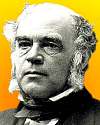 | "Every movement in the skies or upon the earth proclaims to us that the universe is under government." |
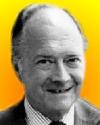 | "Furious activity is no substitute for analytical thought." |
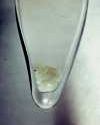 | "We are dabbling in what will always be considered the blackest of black magic. The day will come when people will want to string us up from the nearest lamppost." His first remark at the first meeting of the Reactor Safety Committee of the Atomic Energy Commission (1947). |
| QUIZ | |
| Before you look at today's web page, see if you can answer some of these questions about the events that happened on this day. Some of the names are very familiar. Others will likely stump you. Tickle your curiosity with these questions, then check your answers on today's web page. | |
| Births | |
| |  An American physicist, born 5 May 1921, won the 1981 Nobel Prize for Physics for his work in developing the laser and in laser spectroscopy. An American physicist, born 5 May 1921, won the 1981 Nobel Prize for Physics for his work in developing the laser and in laser spectroscopy. Can you name him? Can you name him? |
| |  Peter Cooper Hewitt, born 5 May 1861, was an American electrical engineer who invented a new advance in electrical lighting. Peter Cooper Hewitt, born 5 May 1861, was an American electrical engineer who invented a new advance in electrical lighting. What form of lighting did he invent? What form of lighting did he invent? |
| Deaths | |
| |  This American (1902-94) invented the modern surf board.. This American (1902-94) invented the modern surf board..  Can you name this inventor? Can you name this inventor? |
 |  Dr Joseph William Kennedy (1916-57) was one of four American scientist that co-discovered a new element by bombarding uranium oxide with deuterons in a cyclotron at the University of California at Berkeley. By 28 Mar 1941, with Emilio Segr�, he demonstrated that this element was fissionable with slow neutrons, like uranium-235, and thus another element that could be suitable as a fission bomb material. Dr Joseph William Kennedy (1916-57) was one of four American scientist that co-discovered a new element by bombarding uranium oxide with deuterons in a cyclotron at the University of California at Berkeley. By 28 Mar 1941, with Emilio Segr�, he demonstrated that this element was fissionable with slow neutrons, like uranium-235, and thus another element that could be suitable as a fission bomb material. Can you name the new element? Can you name the new element? |
| Events | |
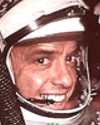 |  America's first astronaut was launched on a 15 minute sub-orbital flight that reached an altitude of 115 miles, during which he experienced about five minutes of "weightlessness." He rode in the Freedom 7 launched from Cape Canaveral, Florida, by a Mercury-Redstone 3 rocket. But, he had been beaten into space by the Russian cosmnonaut Yury Gagarin, the world's first human who reached orbit less than one month earlier. America's first astronaut was launched on a 15 minute sub-orbital flight that reached an altitude of 115 miles, during which he experienced about five minutes of "weightlessness." He rode in the Freedom 7 launched from Cape Canaveral, Florida, by a Mercury-Redstone 3 rocket. But, he had been beaten into space by the Russian cosmnonaut Yury Gagarin, the world's first human who reached orbit less than one month earlier. Can you name America's first astronaunt? Can you name America's first astronaunt? |
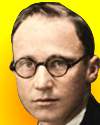 |  John T. Scopes was arrested in 1925 for violating a new Tennessee state law. The following month, after an infamous trial, the judge found him guilty, and fined him $100. Upon appeal, the fine was ruled excessive, and over-ruled. John T. Scopes was arrested in 1925 for violating a new Tennessee state law. The following month, after an infamous trial, the judge found him guilty, and fined him $100. Upon appeal, the fine was ruled excessive, and over-ruled. Why was he charged as a law-breaker? Why was he charged as a law-breaker? |
 In 1809, a U.S. patent was issued to Mary Kies for a "new and useful improvement in weaving straw with silk or thread." The patent itself was less important than another significance for this event. In 1809, a U.S. patent was issued to Mary Kies for a "new and useful improvement in weaving straw with silk or thread." The patent itself was less important than another significance for this event. Why was the issue of this patent significant? Why was the issue of this patent significant? | |
| Answers |
When you have your answers ready to all the questions above, you'll find all the information to check them, and more, on the May 5 web page of Today in Science History. Or, try this link first for just the brief answers. Fast answers for the previous newsletter for May 4: rocket-powered transport; Samuel Wilberforce; Henry Lane-Fox Pitt-Rivers; to maximize the speed and efficiency of navy ships by laboratory work examining scale models in a towing tank; Sears Building in Chicago, Illinois; phonograph disk record; American Academy of Arts and Sciences. |
| Feedback |
 If you enjoy this newsletter, the website, or wish to offer encouragement or ideas, please send feedback by using your mail reader Reply button. If you enjoy this newsletter, the website, or wish to offer encouragement or ideas, please send feedback by using your mail reader Reply button. |
--
If you do not want to receive any more newsletters, Unsubscribe
To update your preferences and to unsubscribe visit this link



Δεν υπάρχουν σχόλια:
Δημοσίευση σχολίου